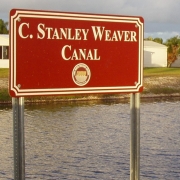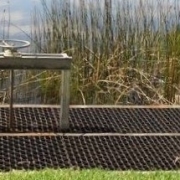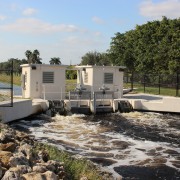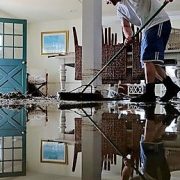The Weaver Family
For 75 years the Weaver name was synonymous with leadership at the Lake Worth Drainage District (LWDD) and the City of Boynton Beach. In the early years of the LWDD, patriarch M. A. Weaver worked on the original field crew that surveyed the canal system. From a young man, Mr. Weaver was familiar with the region and the valuable role LWDD would play in the development of south Florida. He was elected to the LWDD Board of Supervisors in 1932 and served on the Board for 28 consecutive years.
When asked to take his father’s, M.A. Weaver’s seat on LWDD’s Board, C. Stanley Weaver agreed without hesitation. The 1960 LWDD meeting minutes record Weaver saying, “The work of this District was very important to my father. I am honored to follow in his footsteps.” For the next 47 years, C. Stanley Weaver occupied that seat. Upon his retirement from the Board of Supervisors in September of 2007, he was honored for his service with the renaming of the Boynton Canal to the C. Stanley Weaver Canal.
Throughout his life, Stanley Weaver was a true public servant. He was elected to the Boynton Beach City Commission from 1951 to 1956 and served 26 years on the board of the First Bank and Trust of Boynton Beach. In addition to their public service, the Weaver family owned and operated a successful dairy farm located on Military Trail in Boynton Beach as well as the Cypress Creek Country Club.
Many men and women can be credited for the success and development of this area. But the legacy of the Weaver Family, and specifically C. Stanley Weaver will live on in this community for many years to come.










